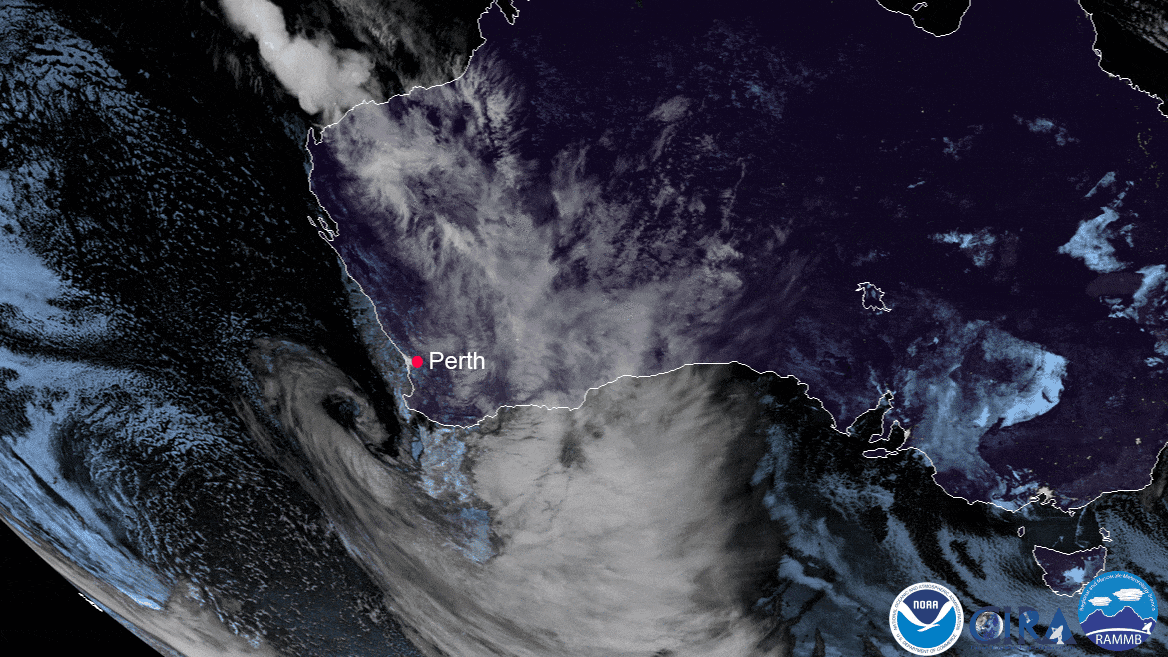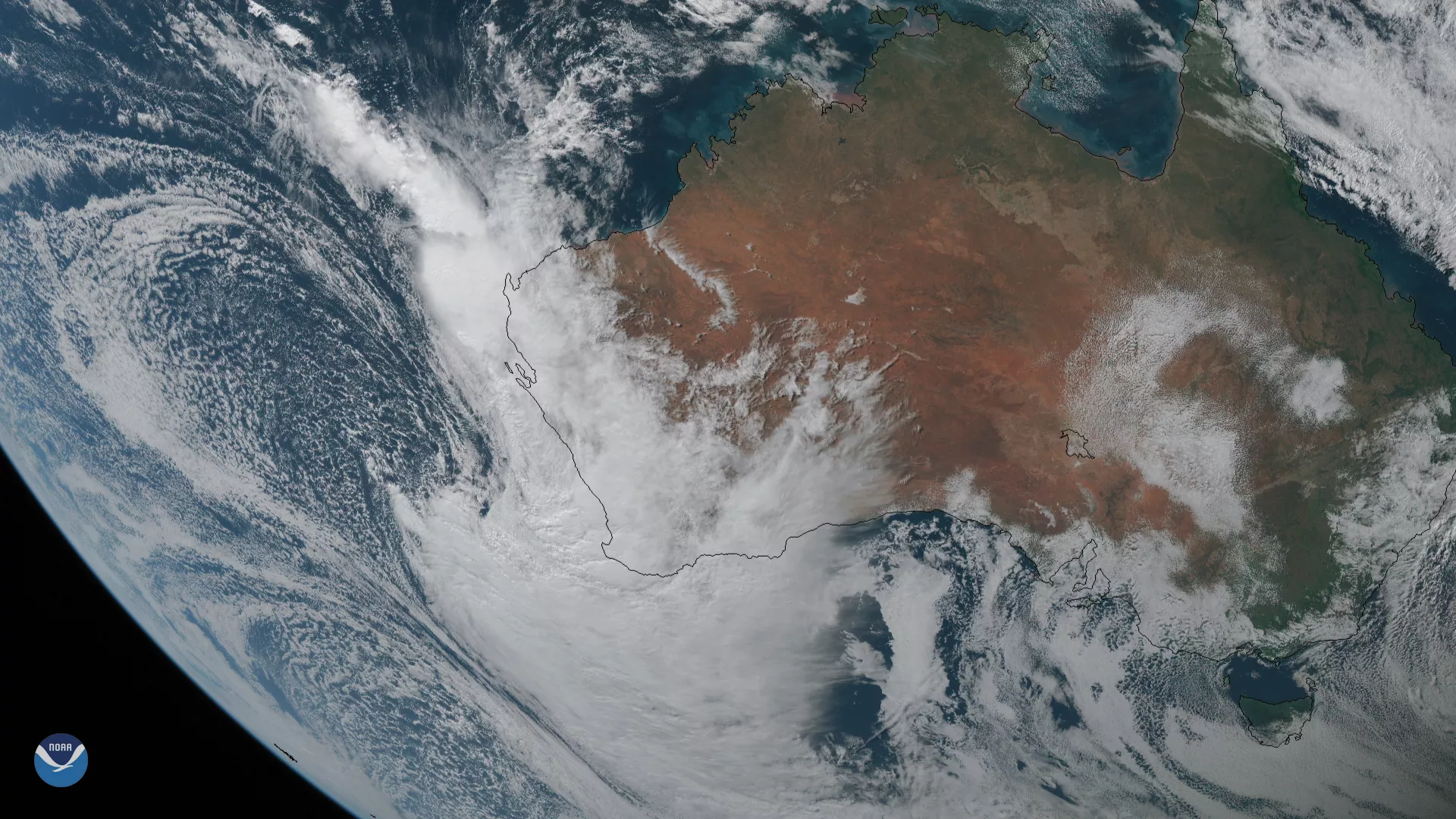
On May 24, 2020, the Himawari-8 satellite spied ex-tropical cyclone Mangga making landfall in Western Australia. The storm first formed over the Indian Ocean on May 21 and then dissipated as it pushed toward Australia. However, this past weekend, the remnants collided with a cold front, prompting the acting assistant commissioner of Western Australia’s Department of Fire and Emergency Services to call it “ a once-in-a-decade-type system.”
The severe storm system, whose sustained winds reportedly reached upwards of 78 mph in some areas, left more than 60,000 properties in Western Australia, mostly in the city of Perth, without power, and damaged many buildings and trees. The strong winds also kicked up dust storms ahead of the rain. Emergency services responded to more than 550 calls for help across the state.

Still image of ex-tropical cyclone Mangga over Australia, captured via the Himawari-8 satellite on May 24, 2020.
This was a rare weather event for a number of reasons. First, the Australian cyclone season officially runs from November 1 to April 30, so an ex-tropical system of this strength affecting the region in late May is unusual. Secondly, storms in the region typically come from the southwest, but this one came from the northwest. Finally, the wide-reaching effects from this storm were staggering, with damage reported from the resort town of Kalbarri all the way to Denmark, on the country’s southwestern tip, more than 600 miles away.
This imagery was captured by the Advanced Himawari Imager (AHI) on Japan’s Himawari-8 satellite. This satellite, the first unit of the Japan Meteorological Agency's (JMA) third-generation of geostationary satellites, provides visible light and infrared images of the Asia-Pacific region. Himawari's data are vital for global geostationary coverage, which is why NOAA and JMA have agreed to mutual back-up arrangements for their geostationary systems.